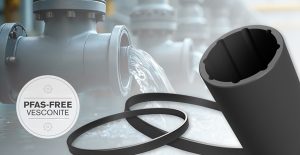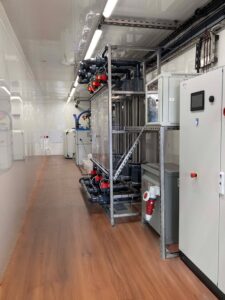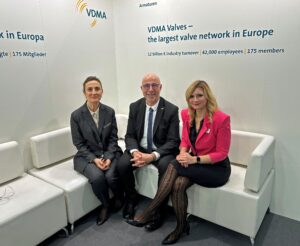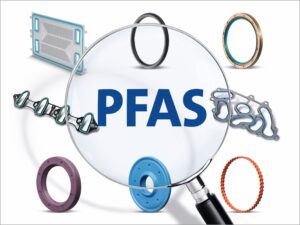Caprari and Calpeda Have Taken Measures to Counteract the Effects of PFAS
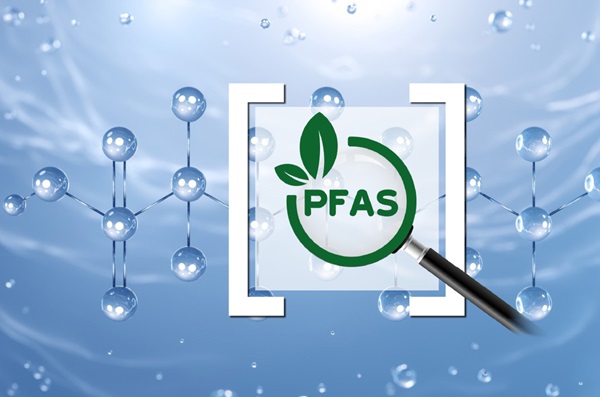
Caprari and Calpeda Have Taken Measures to Counteract the Effects of PFAS (Image source: CAPRARI S.p.A.)
Also known as “forever chemicals,” PFAS are a group of more than 10,000 compounds used in a wide range of industrial and consumer products to improve their physical and chemical characteristics. Their characteristic feature is that they do not decompose, and accumulate within the environment due to the extremely strong bond between the carbon and fluorine atoms. Thus PFAS have made their way into various terrestrial and aquatic food chains, with potentially adverse effects on human health.
PFAS regulation: where do we stand? (h2)
The regulation of these resistant chemical materials is extremely complex.
While the Stockholm Commission has maintained precise restrictions for PFOS and PFOA since 2004, for the other members of this family there has been increasing interest in carrying out progressive analysis and classification work, which has been followed by assessments of the hazard and the need for planned regulations.
In late 2020 and early 2021, Germany, the Netherlands, Denmark, Norway, and Sweden submitted a proposal to supplement the Reach Regulation 1907/2006 to also include a restriction on PFAS. The initial proposal was for a complete ban on the manufacture, use, and placement on the market of PFAS and mixtures or articles containing PFAS. A restriction that would have a decisive impact given the wide use of these compounds, as evidenced by the more than 5,600 comments and position papers sent to the scientific technical committees after the dossier was published in April 2023. Comments were also received from pump manufacturers, through the trade association Assopompe. In general, it is not likely that there will be any backtracking, but any changes will rather focus on exemptions allowing different industries time to adjust.
Caprari and Calpeda's commitment to environmental and health protection (h2)
We believe that adherence to the principles of sustainability does not end with total compliance with the current regulations, but rather must translate into concrete support for the development of responsible innovation.
We have always invested in research aimed at producing high quality products that are sustainable and suitable for the protection of human health.
With regard to chemicals, Caprari and Calpeda comply with the REACH (Registration, Evaluation, Authorisation of Chemicals) regulation, as well as the RoHS (Restriction of Hazardous Substances) directive, which specifies quantities and concentrations of substances identified as hazardous in electrical and electronic equipment (EEE).
Rounding out the picture is now the PFAS free project, which is ahead of the most stringent regulations on the subject, as well as the possible market requirements.
PFAS: the current scenario, amid data and perspectives (h2)
These emerging micropollutants were a main topic of the recent focus group dedicated to the issue of “Water and Health,” held at the 6th edition of the Valore Acqua Community, of which Caprari and Calpeda are part, as Wateralia.
The scenario that emerged from The European House-Ambrosetti's reworking of data collected by the European Environment Agency clearly highlighted the scale of the problem and the importance of active involvement on the part of the extended water supply chain.
In Europe, there are more than 17 thousand PFAS-contaminated sites where the concentration of these substances in the groundwater and surface water, soil, or living organisms is greater than 10 ng/l. In addition, 2,100 of these sites are classified as hotspots, meaning they have concentrations greater than 100 ng/l. Italy is extensively involved in the problem, with more than 1,600 contaminated sites.
In addition to the numbers, there is also another very important aspect to be noted. The techniques currently available only allow PFAS to be captured, but not destroyed, thus generating flows of waste that are difficult to treat or dispose of. It therefore follows that the most strategic and sustainable solution is to control the presence of PFAS upstream, before they enter the sewage treatment plants.
Networking to promote safety (h2)
In this regard, Caprari and Calpeda have taken action with their standards and certification team in order to deal with this issue in a structured manner. An internal investigation was conducted to ensure that no PFAS is used in any of the processing steps carried out at the company. In addition to certifying/declaring that PFAS are not released into the environment through its production processes, the full supply chain was also involved.
All suppliers from whom plastic and metal components are purchased have been asked to share a detailed dossier highlighting the possible presence of PFAS in their products and work processes, also indicating the specific subcategories of the compounds. It is extremely important to be able to assess the amount of attention that suppliers are dedicating to the issue, as well as the actions they are taking. For example, they were asked how they themselves relate to their own suppliers, in order to help raise the industry's overall awareness and stimulate the search for new solutions wherever possible. All with the awareness that partnership for the achievement of goals, as Goal 17 of the UN Agenda states, is imperative when it comes to sustainability.
Meanwhile, some extremely positive feedback is already coming in. Among the most significant is that from one of the leading suppliers of mechanical seals, which has found ways to replace products containing PFAS with others that offer equal performance while respecting the environment. And this is just one example of a valid synergy towards the production of 100% PFAS-free electric pumps.
Source: Caprari S.p.A.

